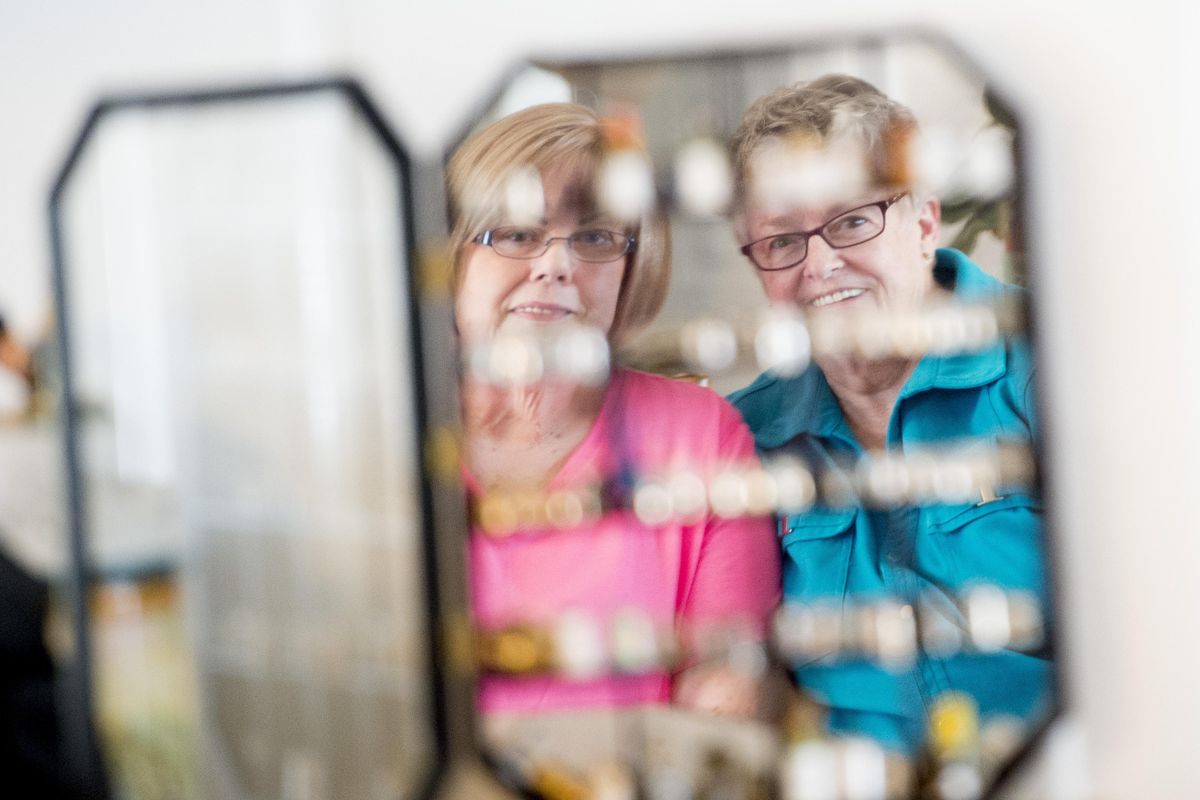Spokane collectors have thimbles made of gold and cured in urine

The thimble that launched a club, a convention and a collection that once numbered into the thousands is a thing of beauty. Vibrant jewel tones sparkle against a worn brass background.
“It’s Greek in origin,” said its owner, Theda Grinwis.
Thirty years ago, Grinwis, then an antique hobbyist, finally narrowed down what she wanted to collect – thimbles.
“They’re small, cute and you can have a lot of them and not take up too much space,” she said.
She and her husband owned a Dairy Queen in north Spokane and the man who did maintenance for them told her his wife also collected thimbles.
Grinwis got in touch with Alana Liepelt and found out about a collection that was up for sale.
“My mom, Alana and I pooled our money and bought it.” Grinwis said. “There were at least 1,000 thimbles. We went through it together and chose what we wanted.”
But what to do with all the rest?
They decided to travel to the Thimble Club International Convention in Des Moines, Iowa. At the airport they realized they needed club name.
Liepelt’s husband, Dary, said, “How about Nimble Fingers Thimble Club?”
With a club name and a lot of thimbles to unload, they arrived at the convention site where they quickly received a much needed education.
“An expert who’d written a book took us under her wing and educated us. We’d priced our thimbles way too low!”
Thimble Club International hosts conventions every two years and on the last evening of the 1986 convention organizers pondered where to hold their 1988 gathering.
“How about Spokane?” Alana Liepelt asked.
Stunned, Grinwis just looked at her. After all they only had three members. But the idea quickly took hold.
“The first phone call I made was to Lorna. I told her she’d become a thimble collector,” recalled Grinwis.
In Grinwis’ dining room, Lorna Baldwin laughed and fiddled with a selection of thimbles made from Mount St. Helen’s ash.
The friends and former neighbors also have a family connection since Baldwin’s daughter married Grinwis’ son.
Baldwin became a willing convert to the cause. She held up a porcelain thimble from The Crescent department store.
“This has holes in it from use,” she said. “It has history.”
In 1988, with just 15 members, the Nimble Fingers Thimble Club hosted the TCI convention in Spokane. The pre-convention tour included a visit to Arbor Crest Winery, lunch at the historic Patsy Clark Mansion followed by a visit to the Cheney Cowles Museum (which is now the Northwest Museum of Arts and Culture), and a stroll through Manito Park.
“More than 400 people from all over the world attended,” said Grinwis.
For the past 30 years membership in the club has waxed and waned, with current active membership at around 15.
They meet every three months, usually on a Saturday and members take turns hosting.
Grinwis’ original collection numbered more than 6,000, but she’s pared it down to around 300. Baldwin’s collection was never that large, but both women say each thimble has a story.
One of the most memorable thimbles is no longer in Grinwis’ collection.
A woman was selling a gold thimble still in its Tiffany box, both in mint condition. Grinwis wasn’t sure if the thimble was real gold or if it was actually from Tiffany & Co., but her instincts told her it was worth a gamble. She paid $100 for the small package.
“You paid $100 for a thimble!?” her husband said when she showed him her purchase.
She took it to a convention and an appraiser verified that it was indeed gold and from Tiffany’s. A bidding war ensued.
“I sold the thimble for $900 and the box for $450,” she said.
Thimbles can be made from almost anything; gold, silver, copper, brass, porcelain, plastic, even animal hides.
Grinwis has an Eskimo thimble made from walrus or seal hide.
“It was cured in urine,” she said. “When I first got it, it really smelled.”
She brought out a delicately etched scrimshaw thimble and a gold-trimmed Meissen thimble from Germany.
These tiny implements used by seamstresses and tailors for thousands of years are imminently practical and often miniature works of art. Steeped in history, they offer a glimpse into the past.
Baldwin showed her favorite; a sterling and brass piece that unscrews to reveal a needle, thread and a tiny pair of scissors.
There are thimbles that double as whistles and thimble stanhopes with miniature scenes viewed by squinting an eye through the opening. Tin thatcher’s thimbles with pointed tips protected workers’ fingers while they made thatched roofs in England.
And then there’s the whimsical wooden creation, christened “Nimby,” the thimble club’s mascot, and a tiny child-sized thimble etched with the words “For a good little girl.”
The club is open to new members and Baldwin pointed out that members don’t just collect thimbles.
“There’s all kind of sewing paraphernalia – scissors, pincushions, you name it,” she said as she placed her thimbles into their glass-backed case.
She laughed. “I have thimbles, but I still don’t consider myself a collector.”